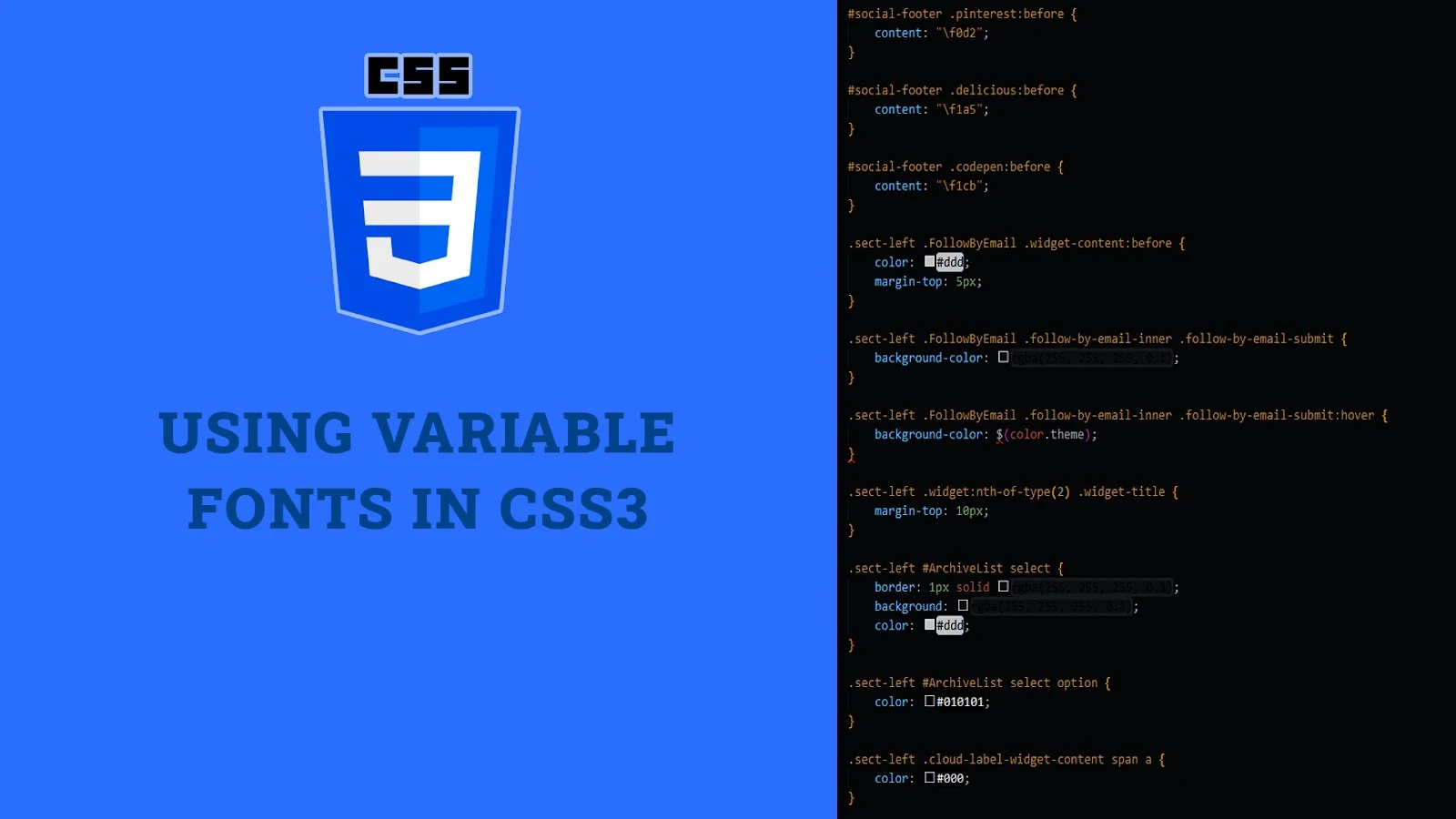Variable fonts are a transformative innovation in typography, allowing for a wide range of styles and weights within a single font file. This flexibility can reduce the number of HTTP requests and enhance performance while offering more design options. In this article, we will explore how to use variable fonts in CSS3, provide practical examples, and demonstrate how to leverage their capabilities for creative and efficient web design.
Understanding Variable Fonts
Variable fonts are a type of font format introduced in the OpenType specification that allows a single font file to contain multiple styles and weights. This means you can have a range of styles, from thin to bold, or normal to italic, all within one file.
Key Properties:
- wght: Controls the weight (thickness) of the font.
- wdth: Controls the width of the font.
- ital: Controls whether the font is italic.
- slnt: Controls the slant angle of the font.
Integrating Variable Fonts
To use variable fonts in your CSS, you need to include the font using the @font-face rule and specify the variable axes you want to control.
Example:
@font-face {
font-family: 'MyVariableFont';
src: url('fonts/MyVariableFont.woff2') format('woff2');
font-weight: 100 900;
font-stretch: 75% 125%;
}Once the font is loaded, you can use it in your CSS and control its properties dynamically.
body {
font-family: 'MyVariableFont', sans-serif;
font-weight: 300;
}Practical Examples of Variable Fonts
Let's explore some practical examples to demonstrate how to use variable fonts effectively in your designs.
Example 1: Responsive Typography
<style>
h1 {
font-family: 'MyVariableFont', sans-serif;
font-weight: 100;
}
@media (min-width: 768px) {
h1 {
font-weight: 700;
}
}
</style>
<h1>Responsive Heading</h1>Example 2: Interactive Control with JavaScript
<input type="range" min="100" max="900" value="400" id="weightSlider">
<h2>Interactive Heading</h2>
<script>
document.getElementById('weightSlider').addEventListener('input', function() {
var weight = this.value;
document.querySelector('h2').style.fontWeight = weight;
});
</script>Fun Facts and Little-Known Insights
- Fun Fact: Variable fonts can significantly reduce the number of font files needed for a project, improving load times and performance.
- Insight: The
@font-facerule can define multiple variable axes, allowing for extensive customization of a single font. - Secret: Variable fonts support fine-tuned control over typography, enabling designers to achieve precise visual effects.
- Trivia: The OpenType variable font format was introduced by Microsoft, Apple, Adobe, and Google in 2016, marking a significant advancement in typography.
- Hidden Gem: Variable fonts can be animated using CSS keyframes or JavaScript, creating dynamic and engaging text effects.
Conclusion
Variable fonts in CSS3 offer a revolutionary approach to typography, providing unparalleled flexibility and performance benefits. By understanding and leveraging the key properties of variable fonts, developers can create dynamic, responsive, and visually engaging text elements. Whether you're aiming for responsive typography, interactive controls, or fine-tuned styling, variable fonts empower you to push the boundaries of web design. Embrace the power of variable fonts to enhance your web projects and create captivating, user-friendly experiences.
 Reviewed by Curious Explorer
on
Sunday, December 08, 2024
Rating:
Reviewed by Curious Explorer
on
Sunday, December 08, 2024
Rating:




No comments: